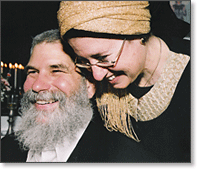The
theme of Rosh Hashana cooking is Sweetness – like sweet noodle kugel with fruit
cocktail and raisins, sweet tsimmes with prunes and butternut squash along with
the sweet potatoes, and of course the sweetest honey cake. How about some
unexpected dips for the sweet round challah?
Here’s a recipe with a surprisingly sweet twist
substituting honey instead of the usual garlic!
SWEET
TECHINA:
½ cup sesame
paste (techina)
½ cup water
& blend till smooth and creamy adding more techina to thicken or water to
thin the mixture
Add the juice
of one lemon
1 Tablespoon
honey
A pinch of
salt
A pinch of
ground cumin
You can
spread some SWEET TECHINA or get really adventurous and go south of the border
for some...
SWEET
GUACOMOLE:
Mash 2 ripe
avocados add a pinch of salt, the juice of one lemon and of course Honey to
taste!
A bride and
groom dip in honey instead of salt for their entire first year of marriage!
We
start dipping our sweet challah with raisins into honey on the first night of
Rosh Hashana, and continue through Simchat Torah, each time symbolically wishing
each other and all of Israel
a very Sweet New Year filled with love and gratitude.
Shana Tova!


